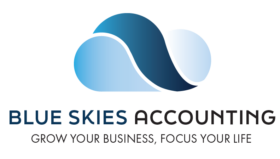Introduction
Calgary Chartered Accountants | Running a home improvement business in Calgary comes with its own set of challenges and opportunities. One of the critical aspects of managing such a business effectively is understanding the financial intricacies, particularly how to handle capital assets and equipment. Amortization plays a crucial role in this, allowing businesses to spread the cost of expensive assets over their useful lives. At Koss Accounting, we specialize in helping Calgary-based home improvement businesses navigate these financial waters efficiently.

Understanding Amortization
Amortization is the process where accountants in Calgary can gradually write off the initial cost of an asset over its useful life. This financial strategy helps businesses manage cash flow and reduce taxable income by spreading the expense over several years instead of a single fiscal period. For home improvement businesses, this can include a wide range of capital assets such as machinery, vehicles, and tools.
Unique Aspects of Amortization for Home Improvement Businesses in Calgary
Local Market Considerations
Calgary’s home improvement market is unique due to its climate and economic landscape. The harsh winters and relatively mild summers influence the type of equipment and assets that businesses need to invest in. For example, snow removal equipment and high-efficiency heating tools are essential investments. An experienced Calgary accountant will understand these local market nuances and help business owners make informed decisions about their capital assets and amortization schedules.
Regulatory Environment
Calgary, like the rest of Canada, follows specific accounting standards and tax regulations. The Canadian Revenue Agency (CRA) has guidelines on how businesses should amortize their assets, which differ slightly from those in other countries. At Koss Accounting, we ensure that your amortization practices comply with these local regulations, minimizing the risk of audits and penalties.
Steps to Amortize Capital Assets & Equipment
1. Identify Capital Assets
The first step in the amortization process is to identify which assets qualify as capital assets. These are typically items that provide value over multiple years, such as:
- Machinery and Equipment: Drills, saws, and other power tools.
- Vehicles: Trucks and vans used for transporting materials and equipment.
- Office Equipment: Computers, printers, and office furniture.
2. Determine the Useful Life
Once the assets are identified, the next step is to determine their useful life. The CRA provides guidelines on the expected useful life of various types of assets. For example:
- Machinery and Equipment: Typically 5-10 years.
- Vehicles: Around 5 years.
- Office Equipment: Usually 3-5 years.
3. Choose an Amortization Method
There are different methods to amortize assets, and the choice depends on the nature of the asset and the business’s financial strategy. The most common methods include:
- Straight-Line Method: Spreads the cost evenly over the asset’s useful life.
- Declining Balance Method: Applies a constant percentage rate of depreciation to the diminishing book value of the asset each year.
4. Calculate Amortization Expense
Using the chosen method, calculate the annual amortization expense. For the straight-line method, this is done by dividing the initial cost of the asset by its useful life. For the declining balance method, a fixed percentage is applied each year.
5. Record Amortization in Financial Statements
Finally, record the amortization expense in your financial statements. This involves debiting the amortization expense account and crediting the accumulated amortization account.

How Koss Accounting Adds Value
At Koss Accounting, we provide tailored services to help home improvement businesses in Calgary optimize their amortization strategies. Here’s how we add value:
Expert Guidance
Our team of experienced accountants understands the intricacies of Calgary’s market and the specific needs of home improvement businesses. Our expert accountants in Calgary provide guidance on identifying capital assets, determining their useful life, and selecting the most appropriate amortization method.
Compliance and Accuracy
A Calgary accountant should ensure that your amortization practices comply with CRA regulations, reducing the risk of audits and penalties. Our meticulous approach guarantees accuracy in your financial statements, providing you with a clear picture of your business’s financial health.
Customized Solutions
Every business is unique, and we offer customized solutions that align with your specific needs and goals. Whether you’re investing in new equipment or managing existing assets, we tailor our services to help you maximize your financial efficiency.
Challenges and Solutions
Cash Flow Management
One of the common challenges businesses face is managing cash flow while making significant investments in capital assets. Amortization helps alleviate this by spreading the cost over several years. At Koss Accounting, we assist in planning and forecasting to ensure your cash flow remains steady.
Keeping Up with Regulations
Tax regulations and accounting standards can change, and keeping up with these changes can be daunting. We stay abreast of all regulatory updates and ensure your business remains compliant, allowing you to focus on your core operations.
Conclusion
Amortizing capital assets and equipment is a crucial aspect of financial management for home improvement businesses in Calgary. By spreading the cost of significant investments over their useful life, businesses can maintain healthy cash flow and reduce taxable income. At Koss Accounting, we provide expert guidance, ensure compliance, and offer customized solutions to help your business thrive.
If you’re looking to optimize your amortization strategy and enhance your financial efficiency, contact Koss Accounting today. Let us help you navigate the complexities of capital asset management and take your home improvement business to new heights. As Calgary Chartered Accountants, we’re dedicated to your business’s growth and financial health.


